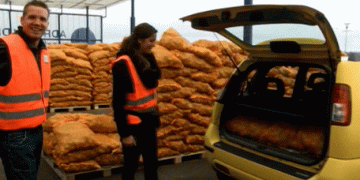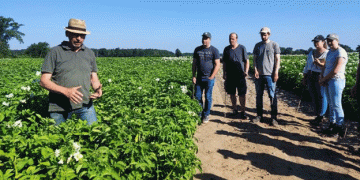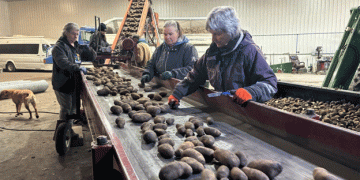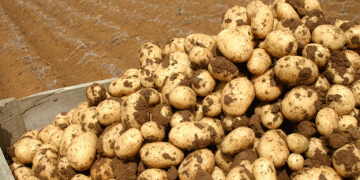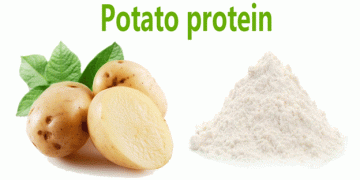Slovakia’s potato sector is at a crossroads. Despite a rich tradition in potato cultivation, the country now imports nearly half of its potato supply. The situation is symptomatic of broader challenges in Slovak agriculture, where economic, climatic, and structural issues converge. This article explores the current state of potato farming in Slovakia, the factors contributing to its decline, and the efforts underway to revive this vital sector.
The Decline of Slovak Potato Farming
Potato farming in Slovakia has seen a dramatic decline over the past few decades. Once considered a staple food, potatoes have lost their prominence on Slovak tables, with annual per capita consumption dropping from over 80 kilograms to around 50 kilograms. This shift in dietary habits, coupled with increased competition from imported products, has made it less attractive for local farmers to invest in potato cultivation.
As of 2024, Slovak farmers are cultivating potatoes on only 5,644 hectares. To achieve self-sufficiency, this area would need to double. However, many farmers are reluctant to expand their potato production, even in traditional potato-growing regions like Liptov, Spiš, and Šariš.
External Pressures: Climate Change and Geopolitical Factors
The challenges facing Slovak potato farmers are not just local but also global. Climate change has introduced greater unpredictability into agriculture across Europe. In France, from where Slovakia imports expensive potatoes, farmers have barely managed to plant within the optimal timeframes due to erratic weather patterns. In Germany and the Netherlands, flooding and late planting have disrupted production.
The war in Ukraine has also had significant repercussions. Since 2022, Ukraine has been allowed to export wheat to the EU without tariffs, putting pressure on Slovak grain producers. This situation underscores the vulnerability of Slovakia’s agricultural sector to external shocks and the need for greater resilience through diversified and sustainable farming practices.
Efforts to Revitalize Potato Farming
Despite these challenges, there are signs of renewed interest in potato farming in Slovakia. In 2024, the area dedicated to potato cultivation increased by 10% compared to the previous year. This growth is partly due to targeted government support, which includes subsidies of 327 euros per hectare for potato cultivation and plans to build new storage facilities with a capacity of 40,000 tonnes. These efforts aim to make potato farming more viable and to encourage more farmers to return to this traditional crop.
Additionally, the revival of the state enterprise Hydromeliorácie is seen as a crucial step in supporting potato farming. This enterprise, which has been neglected and underfunded for years, is now set to receive significant investments to restore Slovakia’s irrigation infrastructure. Effective irrigation is essential for good potato yields, especially in the face of increasingly erratic weather conditions.
The Role of Farmer Organizations and Market Access
One of the key challenges for Slovak potato farmers is market access. Farmers like Ján Komár from Prešov highlight the importance of participating in organized marketing groups. These groups allow farmers to pool resources, negotiate better prices, and secure contracts with retail chains. However, forming such groups has proven difficult in Slovakia, where competition and mistrust among farmers often hinder collaboration.
The success of farmers who have embraced these organizations, like those in the Senec district, where half of Slovakia’s potatoes are now grown, demonstrates the potential of this approach. These farmers have not only optimized their use of irrigation but have also created effective marketing organizations that have opened doors to larger markets.
The future of potato farming in Slovakia hinges on the willingness of farmers to adapt to changing conditions, both climatic and economic. While government support and structural reforms are necessary, the revival of this sector will ultimately depend on the efforts of farmers to innovate and collaborate. By embracing new technologies, participating in marketing organizations, and making better use of available resources, Slovak farmers can increase potato production and move towards greater self-sufficiency.
Slovakia’s potato sector has the potential to thrive once again, but it will require a concerted effort from all stakeholders to overcome the challenges that have led to its decline. The path to revitalization is clear, but it demands commitment, collaboration, and a willingness to embrace change.


